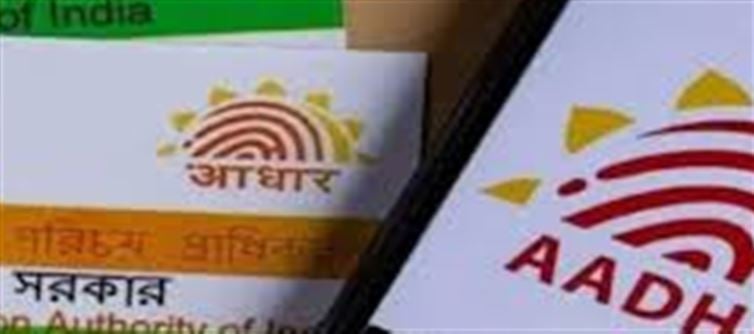
Aadhaar, the 12-digit unique identification number, is an essential part of the indian government's efforts to streamline identification and service delivery. Over time, it has become vital for accessing numerous government and private services. However, as of October 1, 2025, updating your Aadhaar card has become more expensive.
Here’s a detailed breakdown of the new Aadhaar update charges, the reason behind the increase, and the process to update your Aadhaar card.
Increased Fees for Aadhaar Updates
The Unique Identification Authority of india (UIDAI), the body responsible for Aadhaar-related services, has recently revised its fees for updating Aadhaar details. The update fees are now applicable for the following types of changes:
1. Demographic Update: This includes changes such as updating your name, address, date of birth, gender, etc.
2. Biometric Update: This involves updating your fingerprints, iris scan, or photograph.
3. Document Update: If you need to add or modify supporting documents (like proof of identity, address, etc.), you will also incur a fee.
New Charges for Aadhaar Updates
Here’s a breakdown of the new fees that will apply from October 1st, 2025:
1. For Demographic Updates:
o The fee for updating any demographic details such as name, address, date of birth, or gender has increased to ₹50 (previously ₹25).
2. For biometric Updates:
o The fee for updating biometric details like fingerprints, iris scans, or a photo is now ₹100 (previously ₹50).
3. For Document Updates:
o If you are submitting or updating your supporting documents for any changes (such as address proof, identity proof, etc.), there will be a fee of ₹50 (previously ₹25).
Why the Fee Increase?
The increase in the fees is primarily due to the rising operational costs of maintaining the Aadhaar system, including:
1. Infrastructure Costs: The Aadhaar ecosystem has expanded over the years, requiring more resources to manage data, conduct updates, and ensure security.
2. Technological Enhancements: As Aadhaar continues to evolve, advanced biometric technologies and secure databases are needed to safeguard user data, which adds to the cost.
3. Service Enhancement: uidai aims to offer faster, more efficient services, and the increased charges will contribute to improving infrastructure, reducing waiting times, and enhancing user experience.
How to Update Your Aadhaar Details
If you wish to update your Aadhaar details, follow these simple steps:
1. Visit the uidai Portal:
Go to the official UIDAI website https://uidai.gov.in or visit an Aadhaar enrollment center.
2. Choose the Type of Update:
Decide whether you need to update demographic information, biometric details, or documents.
3. Fill Out the Update Form:
Complete the Aadhaar update request form either online or at an Aadhaar center.
4. Pay the Required Fees:
You can pay the updated fees using online payment methods (for online updates) or cash (for updates at Aadhaar centers).
5. Submit Your Documents (if required):
Submit the necessary proof documents for the update. For example, if updating your address, submit a valid address proof.
6. Confirmation and Acknowledgment:
Once you complete the update process, you will receive an acknowledgment slip with the update request number (URN). Use this number to track the status of your update.
When Should You Update Your Aadhaar?
You might need to update your Aadhaar card under the following circumstances:
1. Change in Address: If you’ve changed your residence or need to update your address details.
2. Change in Name: For any changes to your name (such as due to marriage or legal reasons).
3. Change in Date of Birth/Gender: If there’s an error in your birthdate or gender, you can correct it.
4. Biometric Update: If your fingerprints or iris scans need to be updated due to aging or other reasons.
5. Lost or Damaged Aadhaar: If you’ve lost your Aadhaar card or it’s damaged, you might need to update it for re-issuance.
How to Avoid Extra Charges?
1. Verify Information: Before submitting your request, make sure all your details are accurate to avoid multiple updates.
2. Update Regularly: Keeping your Aadhaar details up-to-date will prevent the need for urgent or last-minute updates.
3. Use Online Update Option: Online updates generally incur a lower fee and can be done at the comfort of your home.
Conclusion
The increase in the fees for Aadhaar updates is a necessary step for maintaining the integrity and security of the system. While it might feel like a burden, these updates ensure that the system remains reliable, secure, and efficient as it evolves to handle the growing demand.
If you need to update your Aadhaar, remember to check the new fee structure and follow the simple steps to make the necessary changes. Whether updating personal information, biometric details, or documents, the process remains user-friendly, and the increased fees will ultimately help improve the overall Aadhaar service.
Disclaimer:
The views and opinions expressed in this article are those of the author and do not necessarily reflect the official policy or position of any agency, organization, employer, or company. All information provided is for general informational purposes only. While every effort has been made to ensure accuracy, we make no representations or warranties of any kind, express or implied, about the completeness, reliability, or suitability of the information contained herein. Readers are advised to verify facts and seek professional advice where necessary. Any reliance placed on such information is strictly at the reader’s own risk.
.jpg)




 click and follow Indiaherald WhatsApp channel
click and follow Indiaherald WhatsApp channel